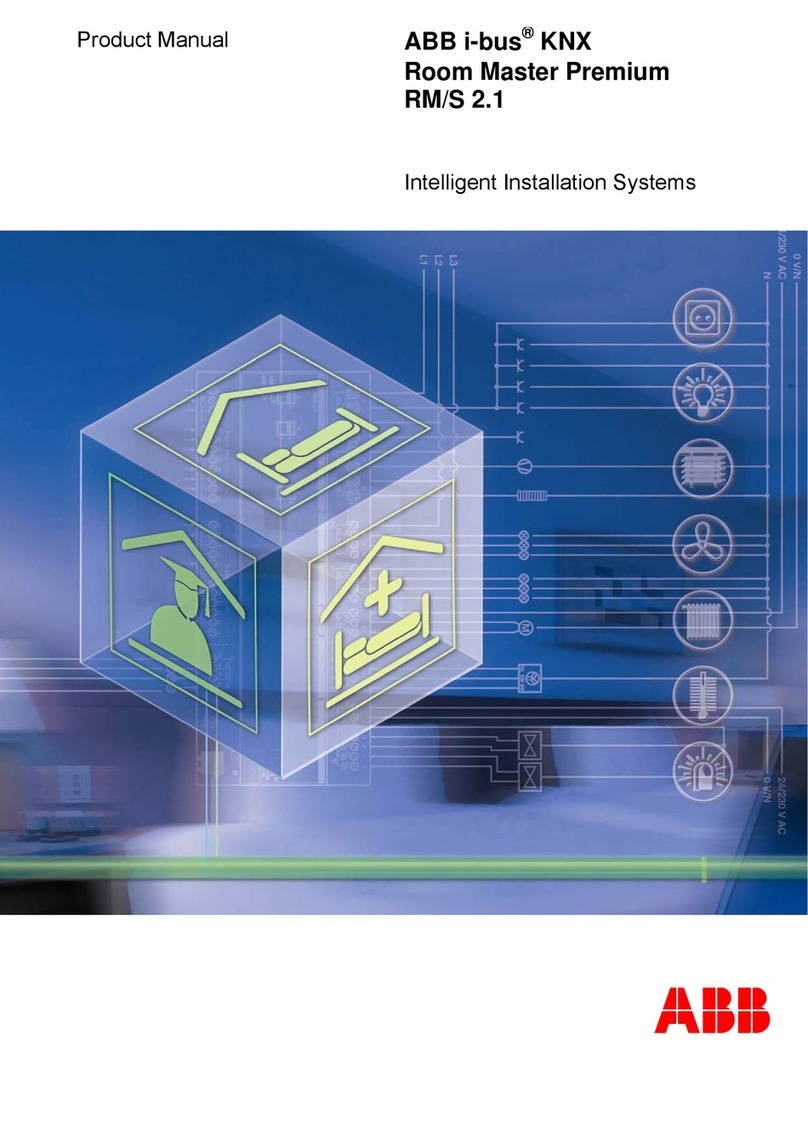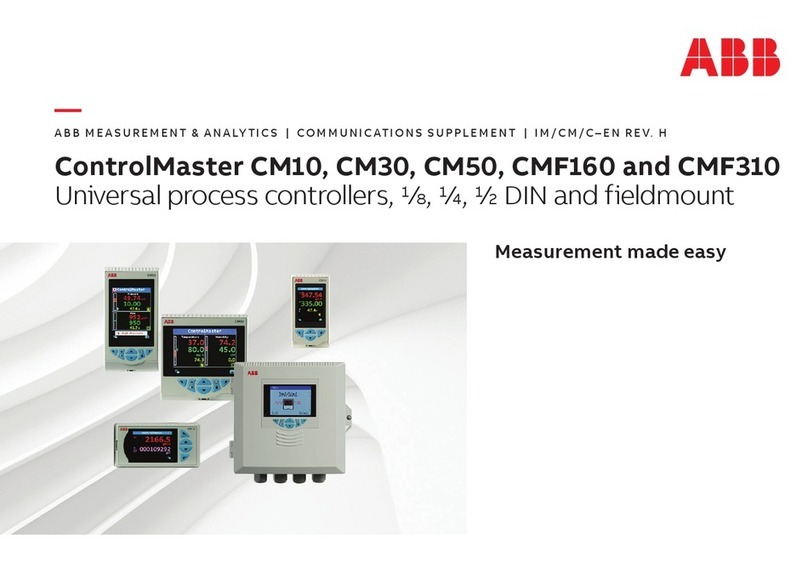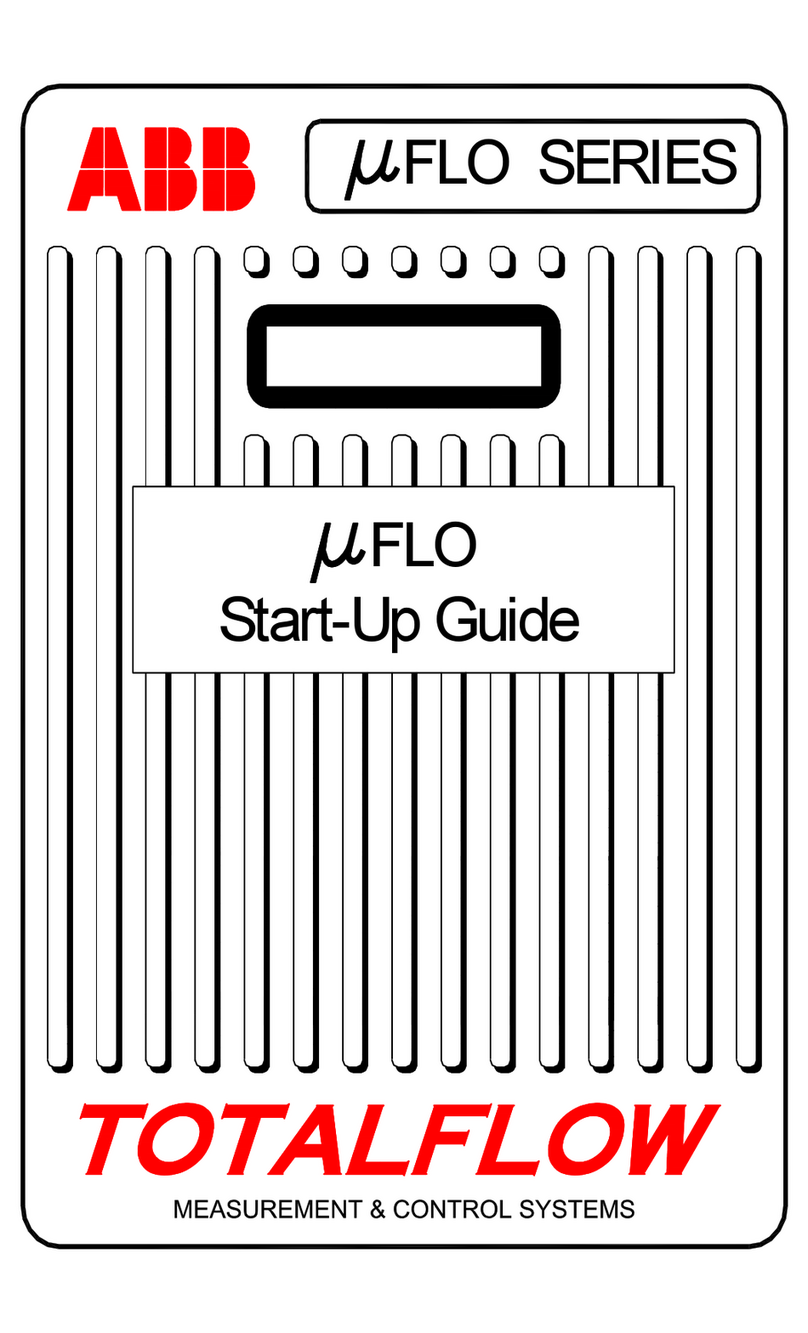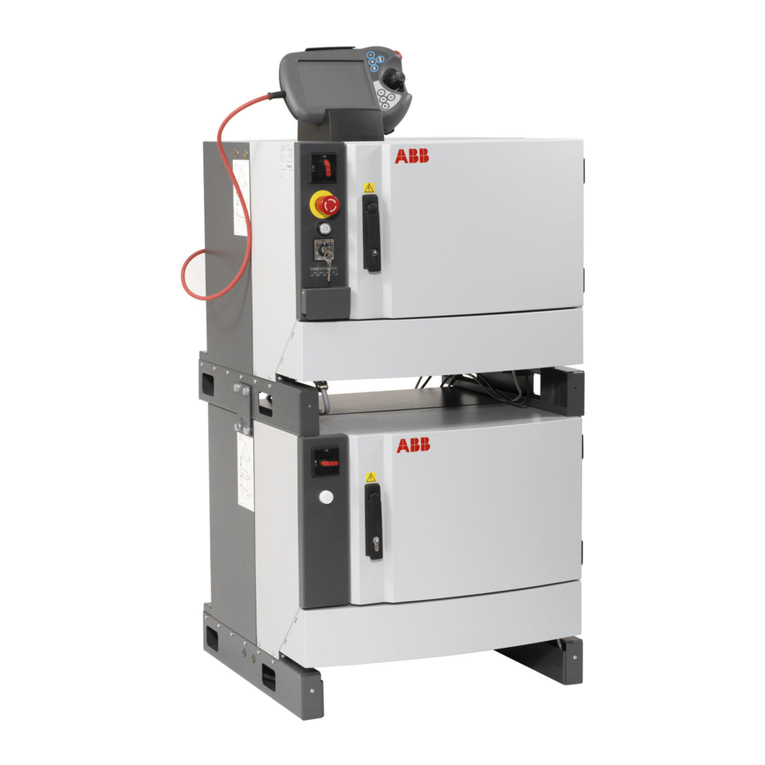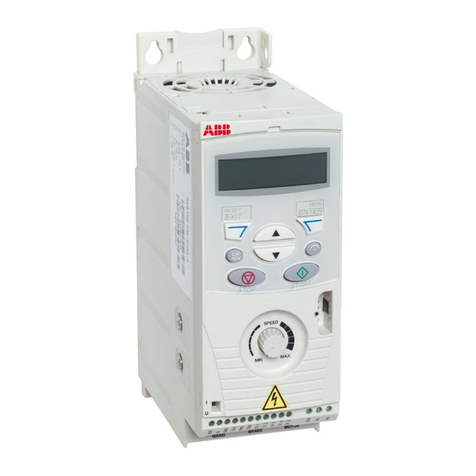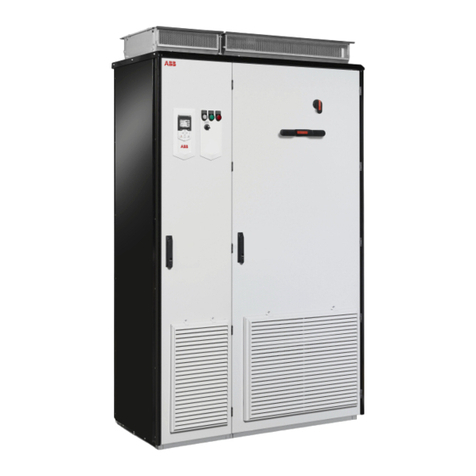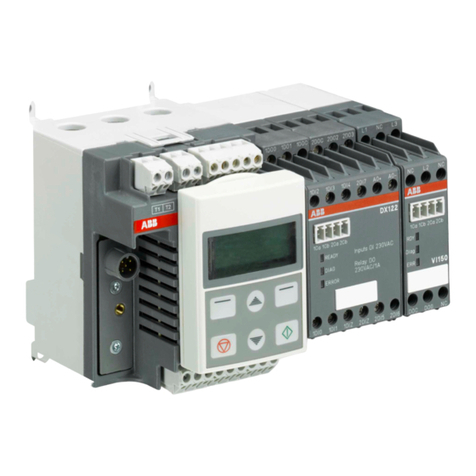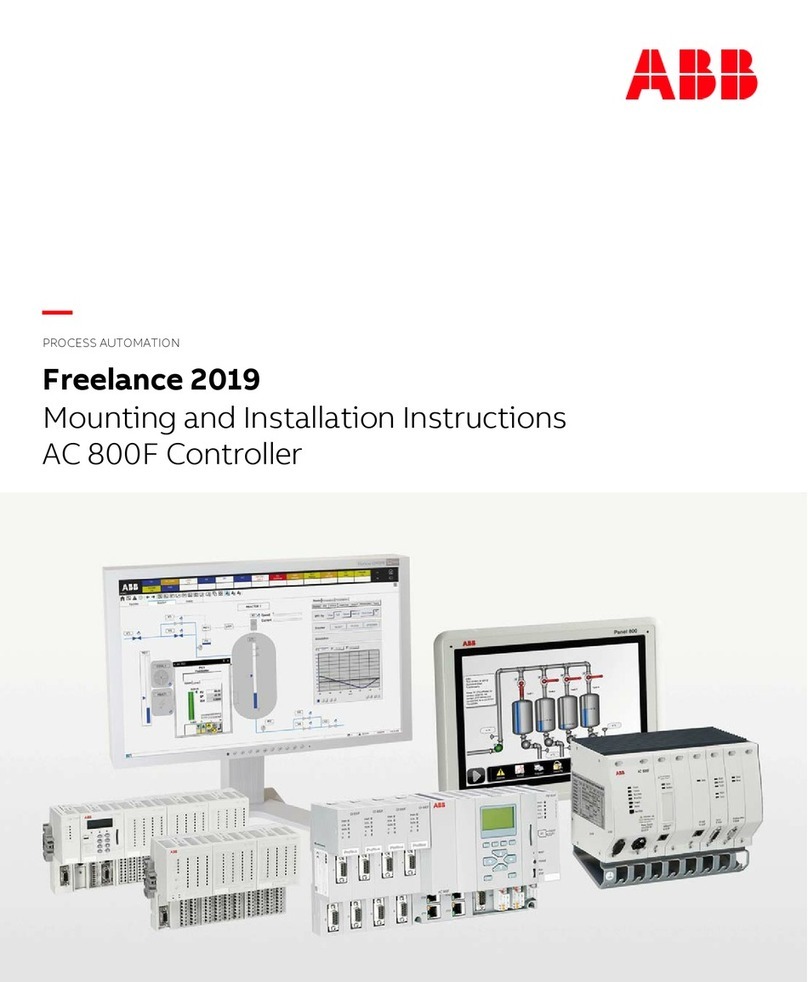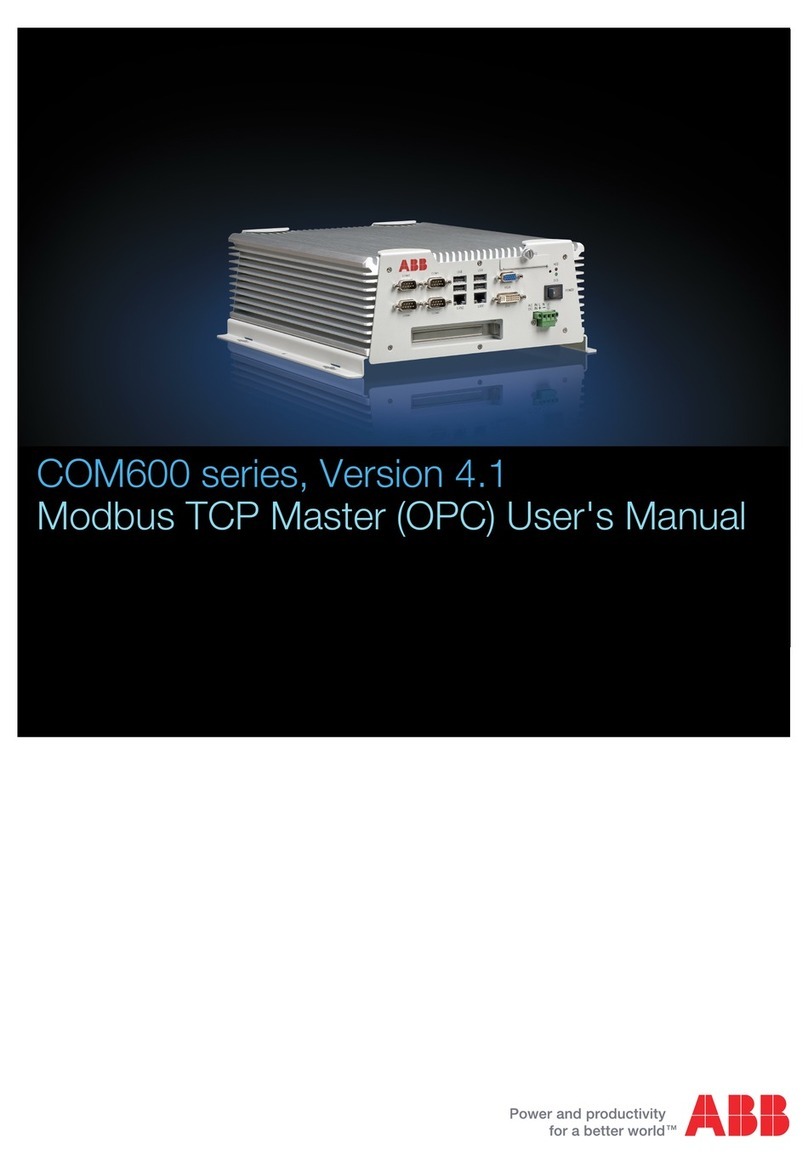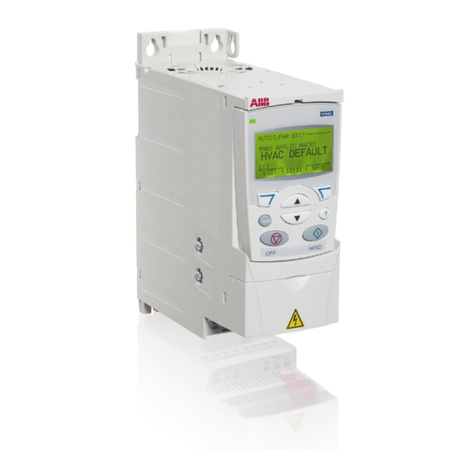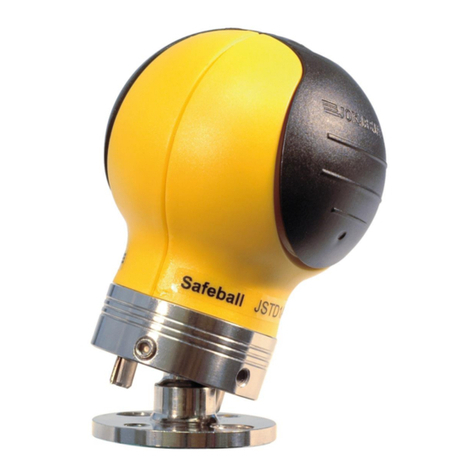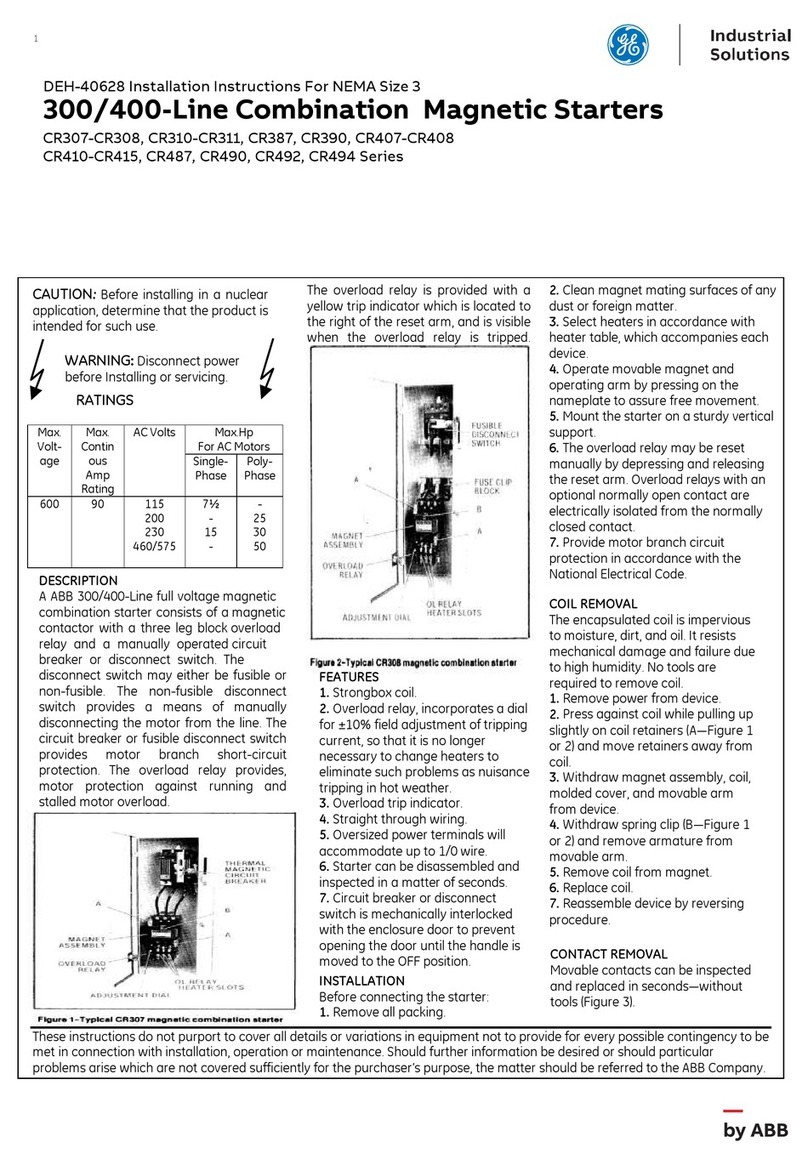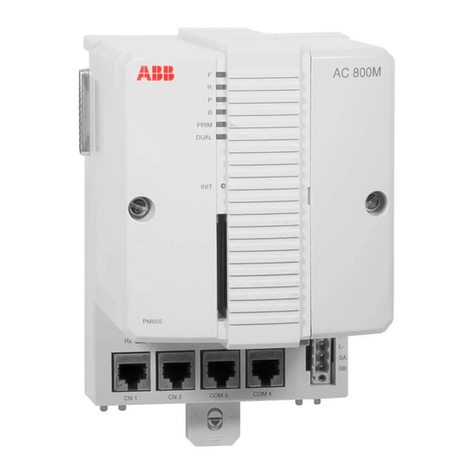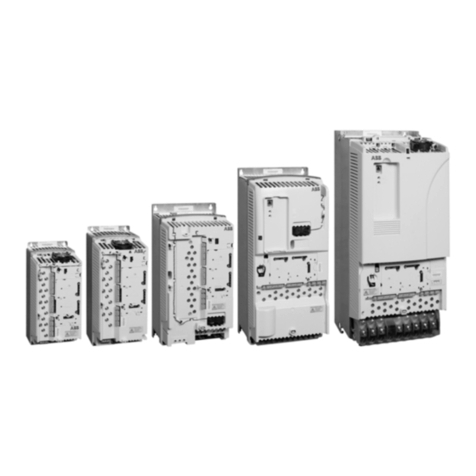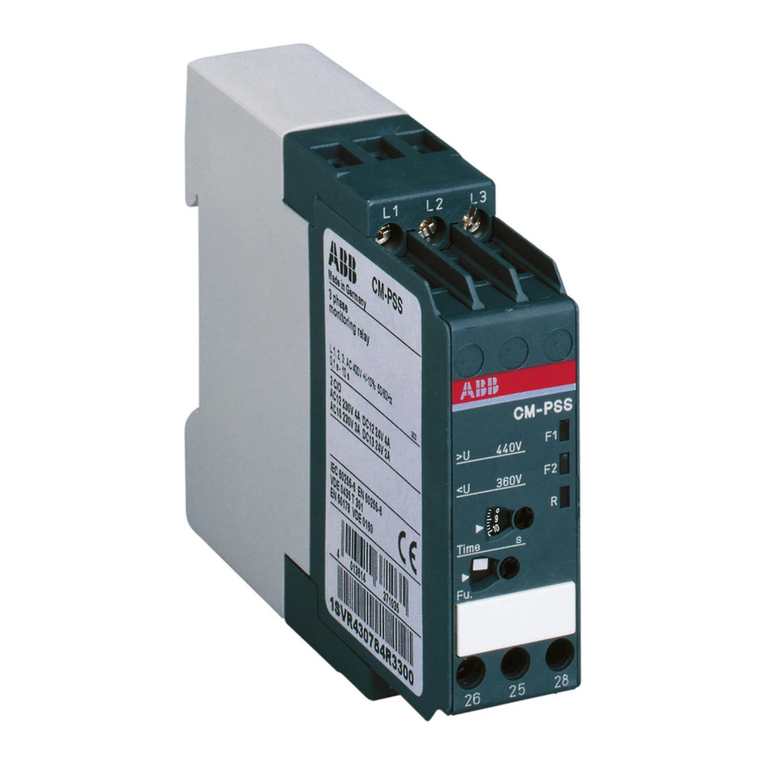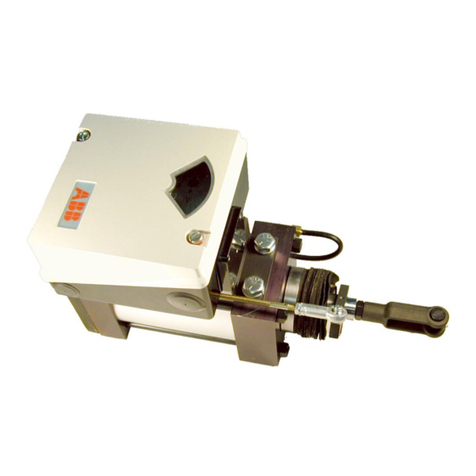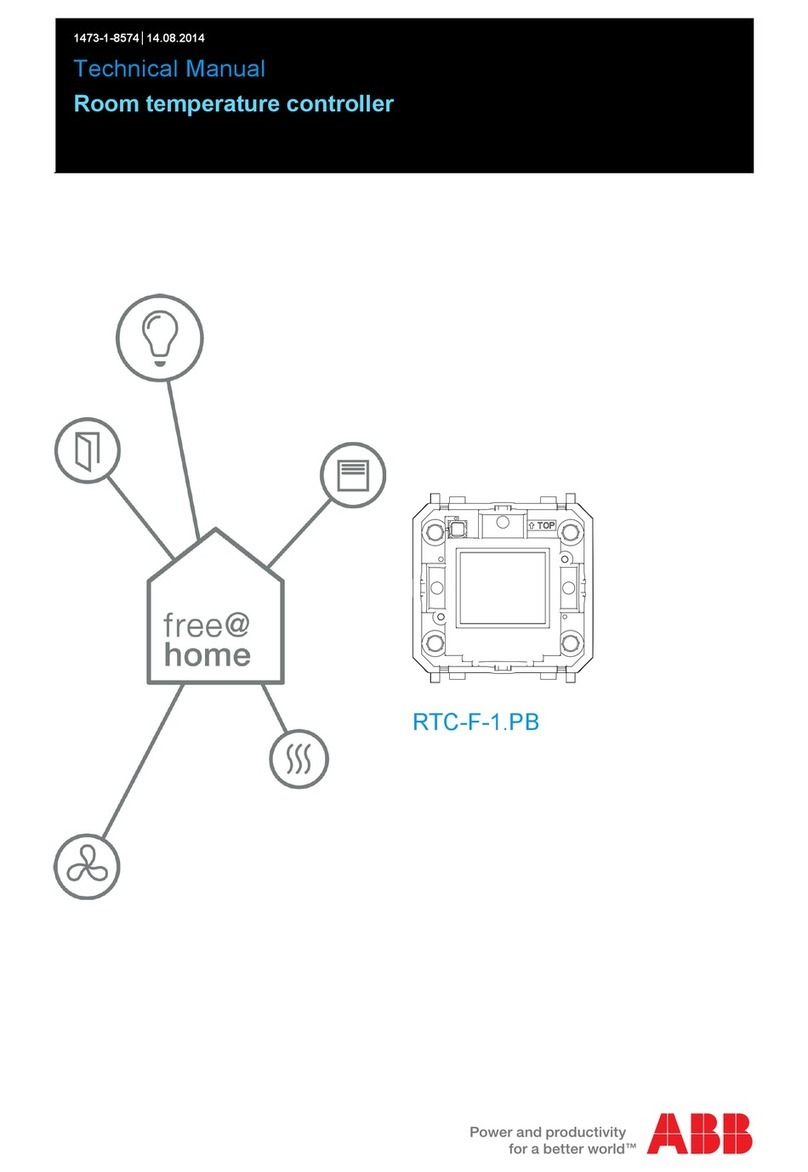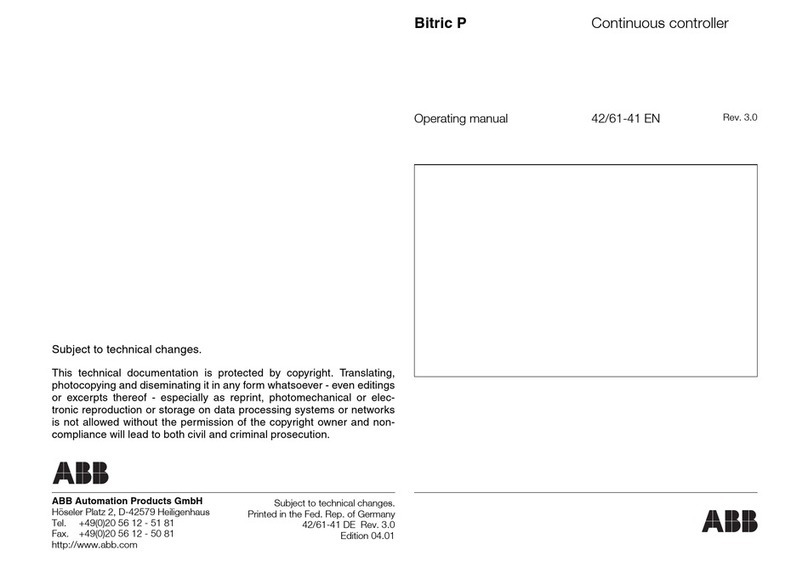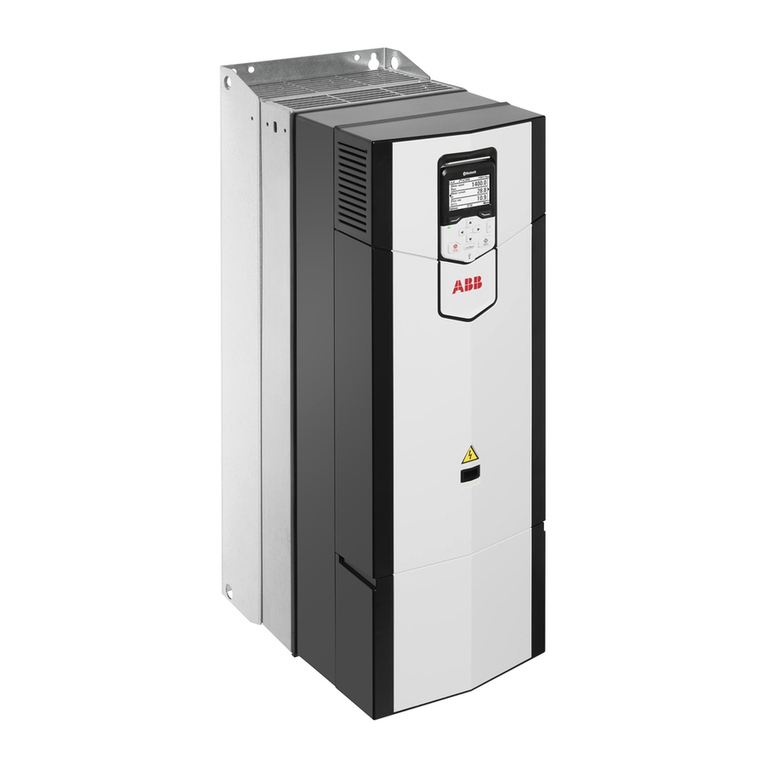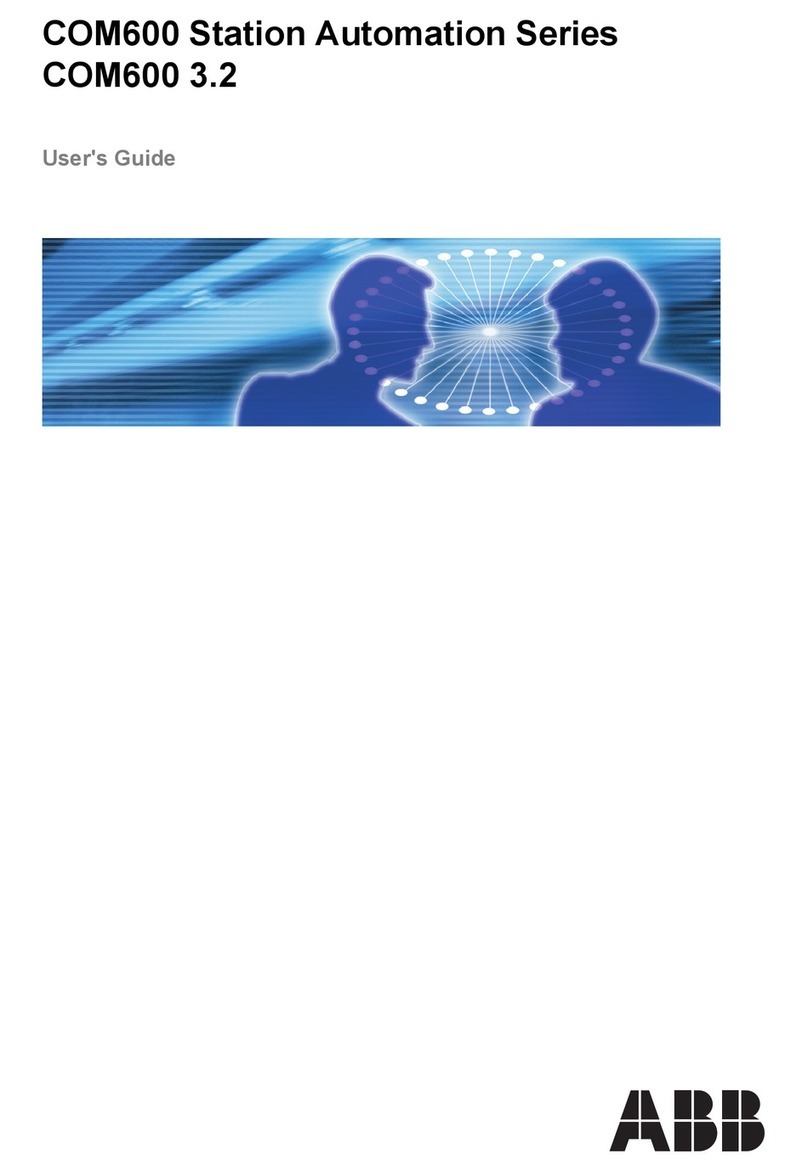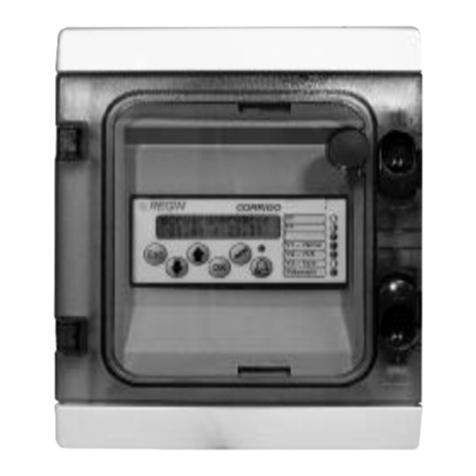
Geräte-Beschreibung
Das Raum-Controller-Grundgerät RC/A 8.2 nimmt bis zu 8 steckbare Module auf. Es steuert deren
Funktion und kommuniziert über ABB i-bus®. In jeden Steckplatz kann ein beliebiger Modultyp
eingesteckt werden. Das eingesteckte Modul wird automatisch erkannt und mit der Einspeisung
und Versorgungsspannung verbunden.
Für den Geräteanschluss sind im Normalfall nur die 230 V-Einspeisung und der Busanschluss
notwendig. Die Einspeisung kann 1-, 2- oder 3-phasig erfolgen. Das Gerät erzeugt seine interne
Versorgungsspannung aus L1. Über den Modulplatz M1...M8 kann ein Modul einer bestimmten
Phase der Einspeisung zugeordnet werden.
DieacheBauformdesRaum-ControllerserlaubtdenEinsatzimUnterbodenoderinderZwi-
schendecke. Die Handbedienung erlaubt sofort nach Zuschalten der Spannung die Überprüfung
der Modulfunktion und der Verdrahtung – auch im unprogrammierten Zustand.
Bei Busspannungsausfall bleibt die Gerätefunktion erhalten. Dadurch können geräteinterne Befeh-
le (z.B. ein Schaltbefehl eines Binäreingangs an einen Aktor) weiterhin ausgeführt werden.
Für Module mit 24 V DC-Einspeisung (z.B. 24 V DC-Jalousieaktoren) stellt das Gerät eine Steck-
klemmeneinrichtung zur Verfügung, um die direkte Verdrahtung der Einspeisung zu den Modulen
zu erleichtern.
Technische Daten (Auszug)
Einspeisung – 3-phasig: L1, L2, L3, N und PE Zur Einspeisung der Modulplätze M1...M8
– Spannungsbereich 85…265 V AC
– Zusatz-Einspeisung 24 V DC, zur Verdrahtung der Direkt-
Einspeisung zu 24 V DC-Modulen
Versorgung – über Phase L1
– Spannungsbereich 85...265 V AC, 50/60 Hz
– interne Leistungsaufnahme max. 4 W (ohne Module)
Verlustleistung max. 4 W (ohne Module)
ABB i-bus®KNX:
Busstromverbrauch < 10 mA
Steckplätze:
Anzahl 8 (M1...M8) zur Aufnahme beliebiger Modultypen
Bedien- und Anzeigeelemente:
LED rot und Taste zur Vergabe der physikalischen Adresse
4 LED’s gelb und Taster zur Statusanzeige und Handbedienung der Modulfunktion
1 Modulwahltaster und 8 LEDs zur Auswahl des zu bedienenden Modulplatzes
Anschlüsse:
Hauptversorgung / Einspeisung 5-polige steckbare Schraubklemme
DE
